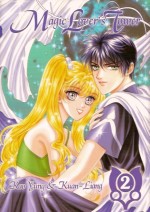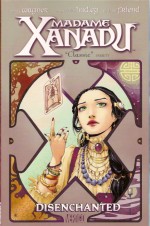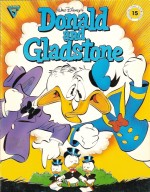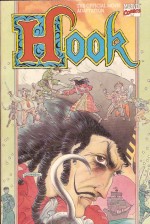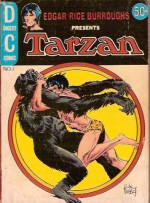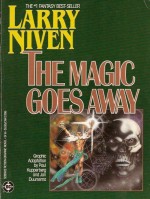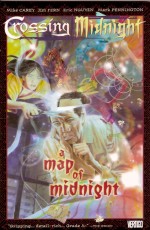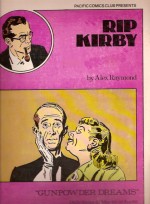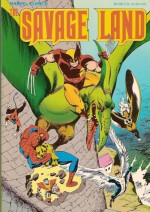
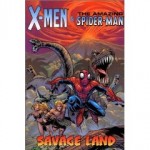
By Chris Claremont, Michael Golden, Dave Cockrum & Bob McLeod, Paul Smith & Terry Austin (Marvel)
ISBN: 0-87135-338-5
In the late 1980s as Marvel was just beginning to move away from their experimental graphic novels and towards today’s reprint-only trade paperbacks, there were very few stand out, stand-alone story-lines that fitted neatly into the rather restrictive format they had settled upon: approximately 80 pages (or four issues) worth of story and featuring popular characters in stories strong enough to get the fans to shell out (said fans being assumed to have already got the original comics). Nobody thought the books would have an independent target audience outside the fan-base.
So most of those early collections were miniseries like Hercules: Prince of Power and Hawkeye or popular short story-arcs like Thor’s Ballad of Beta Ray Bill or the initial Power Pack story (Power Pack Origin Album). Many starred the X-Men.
This lost treasure (which was reprinted in 2002 as X-Men and Spider-Man: Savage Land (ISBN: 978-0-7851-0891-7) is a well-produced oddment that despite being a rousing yarn is more of a cautionary tale about the comics business itself.
In 1982 the company launched a high-quality anthology magazine entitled Marvel Fanfare: slick paper stock, superior printing and a brief to bring innovation and bold new directions. Indeed, under Al Milgrom’s editorial guidance, a number of notable tales from exceptional creators were published, but cynical me – and not just me – soon noticed that a lot of those creators were the ones that had problems with periodical processes and couldn’t make a deadline even if you bought them a ‘how to’ book and a kit labelled “Deadlines for Dummies.â€
These day’s that’s nothing to shout over: comics come out when they do and editors have no real power to decree otherwise, but in the 1980’s it was big deal, with printers booking a project in for a pre-specified date, and charging a punitive fee if the publisher didn’t get a product in on time. That’s why inventory tales were created: fill-in issues that would sit in a drawer until a writer blew it or an artist had his work eaten by the dog. Sometimes the US Mail simply lost the stuff in transit…
This tale teams Spider-Man, Ka-Zar and a bunch of X-Men in a spectacular return to the Savage Land – the antediluvian repository beneath the South Pole where fantastic civilisations and dinosaurs fretfully co-exist – that all kicks off in ‘Fast Descent into Hell’ when a distraught woman tries to find her missing lover, last seen in that lost world. Unfortunately that lost soul is Karl Lykos, a man who feeds on mutants to become a ghastly human Pteranodon called Sauron, and the only way to find him is through Warren Worthington III, the winged mutant publicly known as the Angel.
Worthington’s expedition to the Savage Land includes an embedded news team from the Daily Bugle, including photographer and trouble magnet Peter Parker, who quickly stumbles across a band of evil mutants planning to conquer the outer world by creating mutant hybrids.
In the second chapter of what appears to me an extended Marvel Team-Up storyline that was hit by the “Dreaded Deadline Doom†Claremont and Golden continue the saga in ‘To Sacrifice my Soul…’ as Spidey and Ka-Zar, the Jungle Lord, join forces to crush the mutation plot, inadvertently unleashing the aforementioned Sauron on the sub-polar world.
Golden’s stylish easy grace gave way to the slick, accomplished method of New X-Men designer Dave Cockrum, inked by Bob McLeod for ‘Into the Land of Death…’ as a full team of X-Men (Wolverine, Colossus, Nightcrawler and Storm) joined the Angel and the Ape-man (sorry, just couldn’t resist – and where’s their collected edition, huh?) to thwart the diabolical dinosaur man and his new mutant allies, before legend-in-training Paul Smith stepped in to finish the epic in grand style with the assistance of inker Terry Austin in the climactic, action-packed ‘Lost Souls!’
This story is premium Mutant Mayhem produced by two of the best artists ever to draw the team as well as featuring some of the best art – and colouring – ever produced by Golden, and far in advance of his groundbreaking Micronauts run. This is an old-fashioned comics treat no true fan should be without.
© 1987 Marvel Entertainment Group. © 2002 Marvel Characters, Inc. All Rights Reserved.



